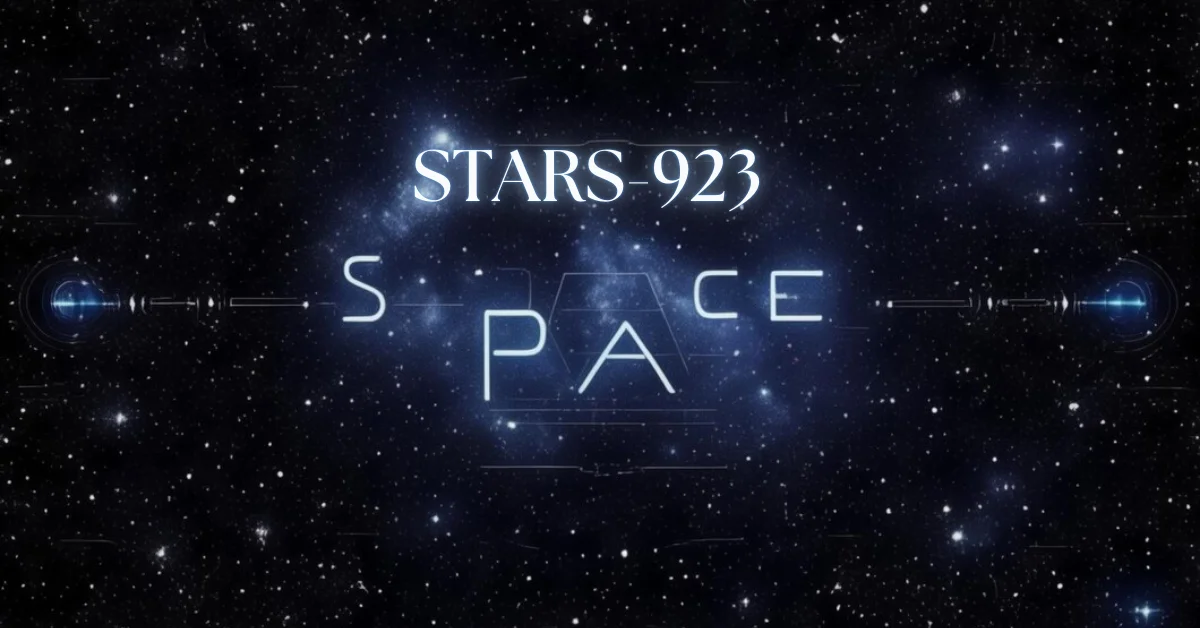Introduction to Stars-923
In the vast expanse of our universe, certain celestial phenomena capture our imagination and leave us pondering their mysteries. One such enigma is Stars-923, a star that has drawn the attention of astronomers and stargazers alike. Its unpredictable behavior defies conventional understanding, sparking intrigue among scientists eager to unlock its secrets. What makes Stars-923 so unique? How did it come to be known in the astronomical community? Join us as we explore this captivating celestial body, embarking on a journey through discovery, observation, and speculation about what lies behind its enigmatic nature. Prepare to delve deep into the cosmos where curiosity meets uncertainty at every twist and turn!
ALSO READ: Princess Zara and the Enigma of U231748506
The Discovery of Stars-923
Stars-923 was first detected by astronomers in late 2020. A routine survey of the night sky led to unexpected signals emanating from a distant region.
Initial observations revealed strange fluctuations in brightness. These anomalies piqued interest among researchers worldwide. They quickly mobilized resources to study this celestial phenomenon further.
As telescopes focused on Stars-923, peculiar patterns emerged. The star exhibited erratic behavior unlike any previously cataloged. This sparked debates within the scientific community about its nature and origins.
The excitement surrounding the discovery grew as more data became available. Each new finding added layers of complexity to our understanding of Stars-923, transforming it into a captivating enigma that demands exploration and analysis.
Observations and Findings of Stars-923
Researchers have been captivated by the peculiar behavior of Stars-923. Observations reveal that this star exhibits unexpected brightness fluctuations, making it a prime candidate for in-depth studies.
The first significant findings came from high-resolution telescopes. Astronomers noted rapid changes in luminosity over short periods. These variations defy standard stellar models, raising questions about their underlying mechanisms.
Spectroscopy data provided further intrigue. The chemical composition indicated unusual elements not typically found in similar stars. This anomaly suggests complex processes at play within its core.
Additionally, astronomers captured intriguing light patterns reminiscent of pulsars or novae activity. However, no definitive classification fits Stars-923 neatly into existing categories.
Field observations continue to generate excitement and curiosity among scientists worldwide. Each new discovery peels back layers of mystery surrounding this enigmatic celestial body while inviting even more questions about its nature and future behavior.
Theories on the Unpredictable Behavior of Stars-923
Astronomers have put forward several theories to explain the unpredictable behavior of stars-923. Some suggest that it might be a binary system, where two stars interact gravitationally. This interaction could cause sudden changes in brightness and position.
Another theory points to magnetic activity. If stars-923 has an intense magnetic field, it may lead to erratic emissions and flares, creating havoc in its luminosity patterns. These bursts could account for its sporadic appearances.
Some researchers even speculate about external influences from nearby celestial bodies. A rogue planet or other stellar objects passing close by might disrupt the equilibrium of stars-923.
There’s the idea of pulsation modes unique to this star type. Such oscillations could result in irregular light variations that defy conventional prediction models. Each theory offers a different lens through which we can attempt to understand this cosmic enigma.
Possible Explanations for the Enigma of Stars-923
Astrophysicists have proposed several intriguing theories to explain the unpredictable behavior of Stars-923. One leading idea suggests that it may be influenced by a companion star, potentially hidden from view. This gravitational pull could lead to erratic fluctuations in brightness and activity.
Another possibility revolves around magnetic fields. These forces can cause significant turbulence within stars, leading to unexpected eruptions or changes in luminosity. If Stars-923’s possesses particularly complex magnetic interactions, this might account for its enigmatic nature.
Some researchers speculate about the role of stellar mergers as well. When two stars collide or nearly interact, they can produce spectacular and unpredictable outcomes. Such events could shed light on the observed anomalies associated with Stars-923’s.
Variations in composition—like heavy elements or unusual gas clouds—could contribute to its elusive behavior. Understanding these factors requires further exploration into the heart of Stars-923’s mystery.
Implications and Impact of Studying Stars-923
Studying Stars-923’s opens up a realm of possibilities in astrophysics. Its unpredictable nature challenges existing theories about stellar behavior. This could lead to breakthroughs that reshape our understanding of the universe.
The impact on technology is also noteworthy. Insights gained from observing such unique celestial phenomena may enhance satellite communication and navigation systems. The data collected can refine algorithms used in space exploration.
Moreover, Stars-923’s inspires a new generation of astronomers and scientists. It ignites curiosity and drives research initiatives focused on unraveling cosmic mysteries. Educational institutions are buzzing with interest, fostering innovative programs around this enigmatic star.
Public engagement plays a significant role as well. As people learn more about Stars-923’s, they become invested in astronomy and science-based education, promoting a deeper appreciation for the cosmos beyond mere fascination with stars alone.
Conclusion: The Enduring Mystery of Stars-923
The study of Stars-923 continues to captivate astronomers and enthusiasts alike. Its unpredictable behavior challenges our current understanding of celestial phenomena. As researchers delve deeper into its mysteries, they uncover more questions than answers.
Stars-923 is not just a point of light in the night sky; it represents the vast unknowns that still exist beyond our planet. Each observation brings with it new data, prompting fresh theories and inspiring further inquiry. The implications for astrophysics are profound, as unraveling this enigma could reshape our comprehension of stellar evolution and cosmic dynamics.
As we gaze up at the stars, Stars-923 serves as a reminder that there’s so much more to explore. The allure of the cosmos lies not only in what we know but also in what remains elusive. This enigmatic star invites us all to ponder our place within the universe and fuels humanity’s relentless quest for knowledge about the heavens above us.
ALSO READ: Keeper Standards Test: Evaluating AI Reliability and Ethics
FAQs
What is “Stars-923”?
Stars-923 is a mysterious celestial object known for its unpredictable brightness fluctuations and unusual spectral profile, captivating astronomers and stargazers.
How was Stars-923’s discovered?
Stars-923’s was first detected in late 2020 during a routine sky survey, where astronomers noticed unexpected signals and unusual brightness patterns.
What makes Stars-923’s different from typical stars?
Unlike conventional stars, Stars-923’s exhibits rapid and erratic changes in luminosity and has a unique chemical composition that defies standard classifications.
What theories explain the behavior of Stars-923’s?
Theories about Stars-923’s include it being part of a binary system, having intense magnetic activity, or experiencing external influences from nearby celestial bodies.
Why is studying Stars-923 important for astrophysics?
Understanding Stars-923 challenges existing theories of stellar behavior and may lead to breakthroughs that enhance our knowledge of the universe and improve technology.











